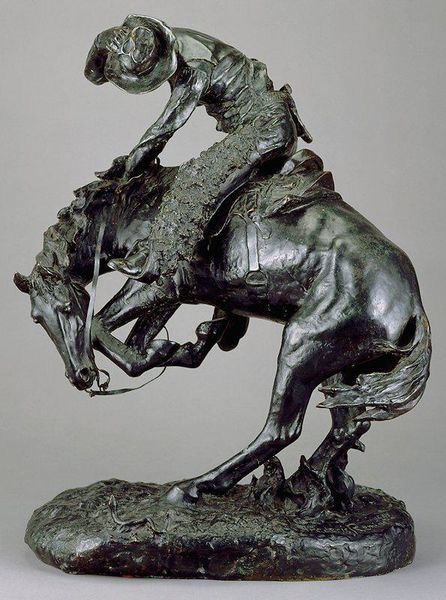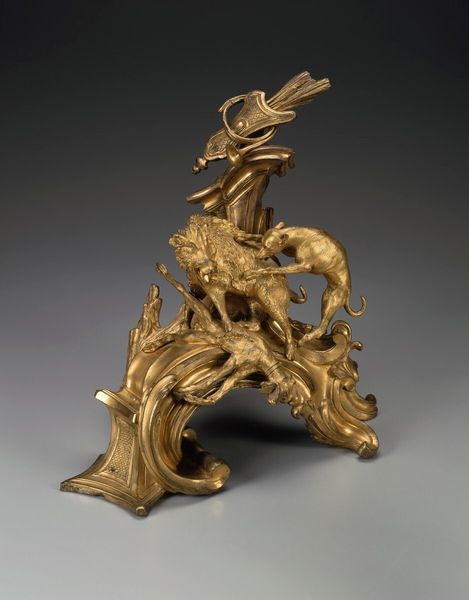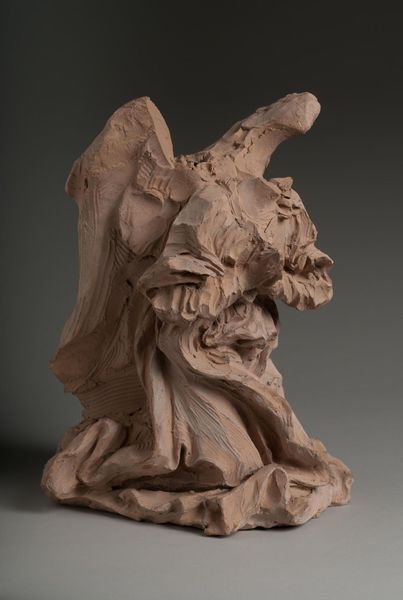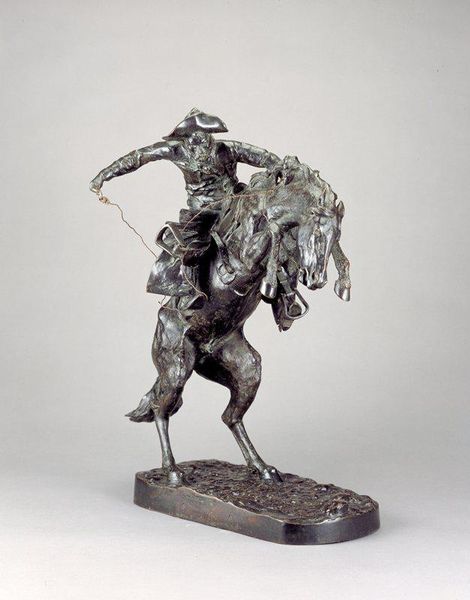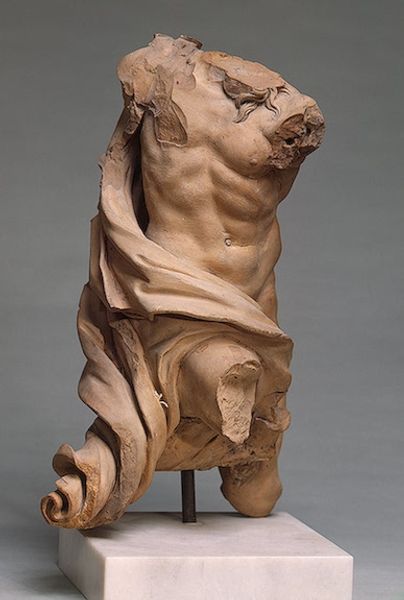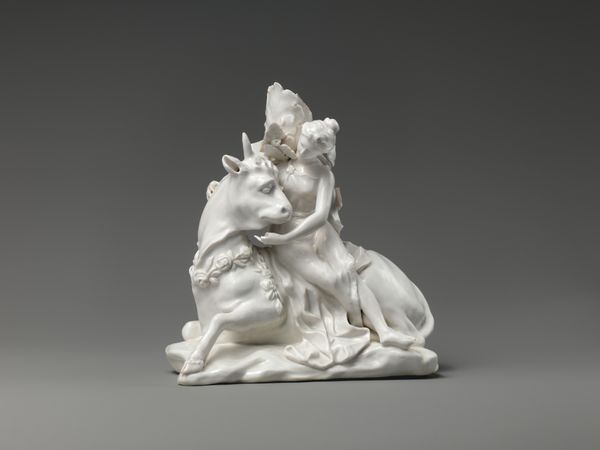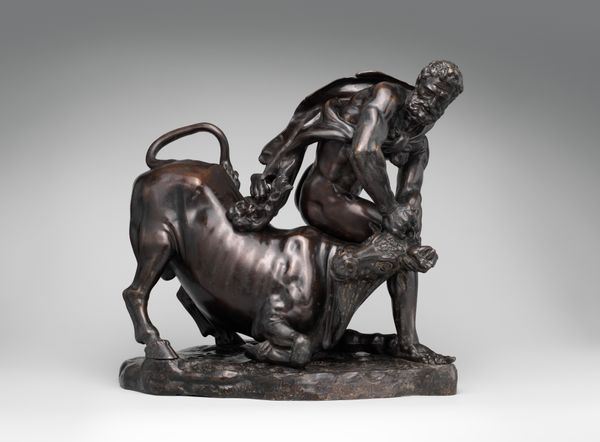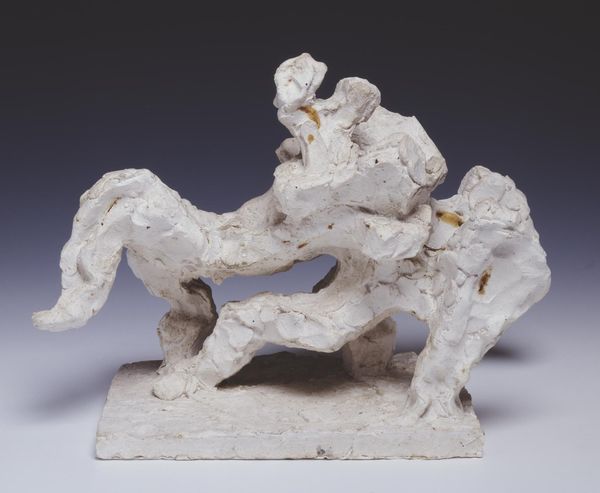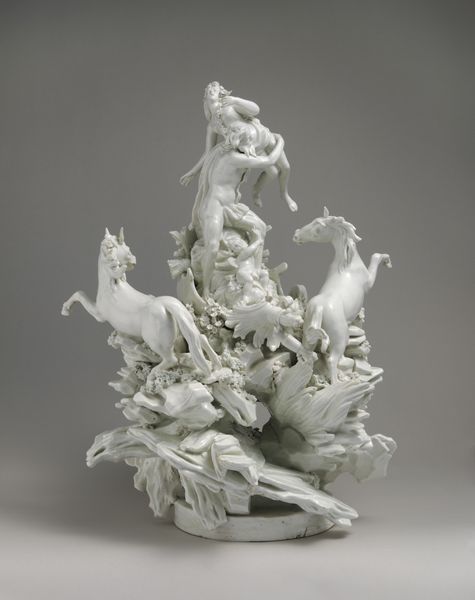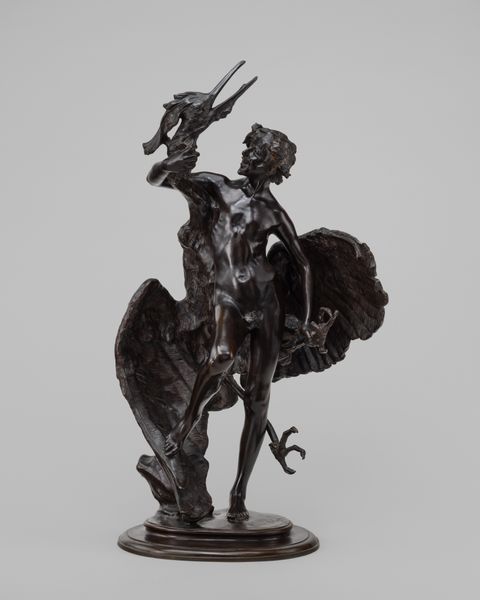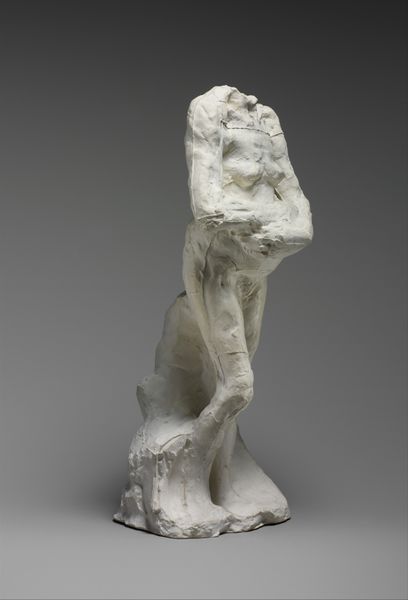
carving, sculpture
#
portrait
#
statue
#
carving
#
baroque
#
sculpture
#
sculpting
#
sculpture
#
horse
#
erotic-art
#
statue
Copyright: Public domain
Curator: This arresting sculpture is Gian Lorenzo Bernini’s “The Emperor Constantine,” carved around 1650, and now residing in the Hermitage Museum. Editor: My initial reaction is to the incredible sense of implied movement. Even frozen in stone, the horse seems to surge forward, almost bursting out of the base. Curator: It is exemplary of the Baroque aesthetic! Beyond the dynamism, think about the socio-political context. Constantine's conversion to Christianity had a monumental impact on the course of European history. This piece serves as a symbol of power inextricably intertwined with religious authority. Bernini, of course, operated within that very structure. Editor: Absolutely, and looking at the work from a materialist perspective, the sheer labor involved is staggering. The process, the extraction of the marble, the carving, the finishing – a testament to skilled craftsmanship and also the physical and social hierarchies that enabled it. Bernini was embedded in a system that could supply and command the material resources for this creation. Curator: Let’s consider how Bernini crafts this narrative. The choice of the horse is particularly potent. Equine imagery throughout art history symbolizes nobility, control, and, quite often, unbridled virility. How does this reflect, or perhaps distort, Constantine’s real history and motives? Editor: Good point. And observe the details, even in reproduction: the way the light plays across the folds of the drapery, the tension in the horse’s muscles. Bernini’s skill almost tricks the eye; stone appears as supple fabric and rippling muscle. That very manipulation is part of the work’s social impact – how material transformations create the aura of power. Curator: I agree, Bernini was a master of illusion, shaping perception and bolstering authority, his work profoundly reflecting its time. It leaves us to consider the ever present tensions between belief, power and artifice. Editor: It definitely pushes me to consider what is beyond the grandeur and surface illusion: the true nature of the historical forces and the human efforts—the making of history, really—crystallized within a physical object.
Comments
No comments
Be the first to comment and join the conversation on the ultimate creative platform.
